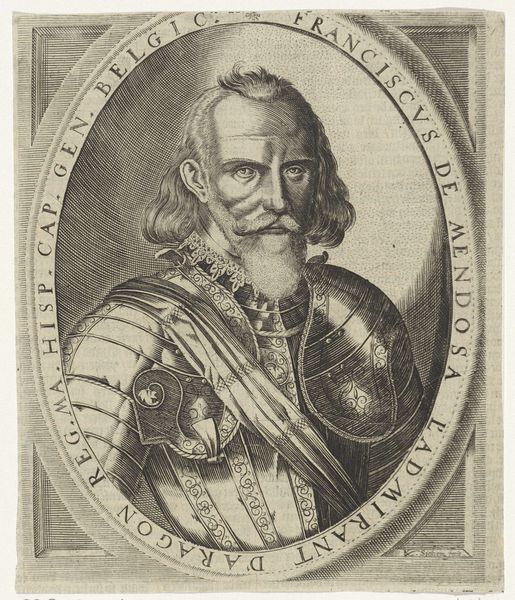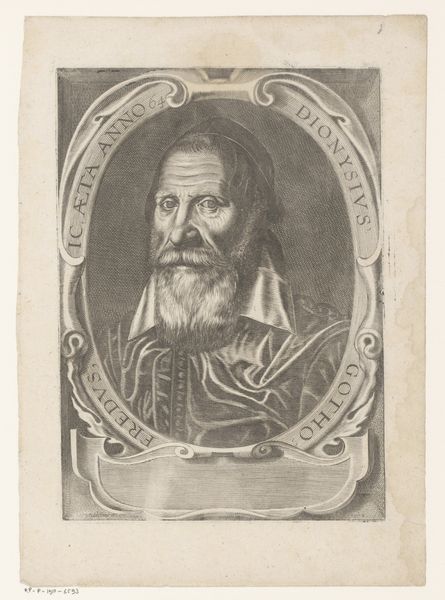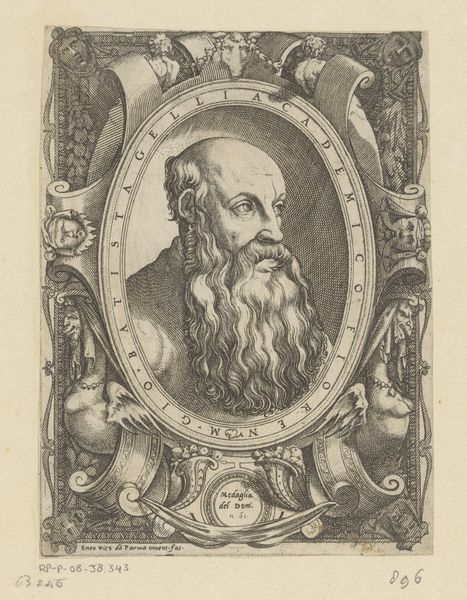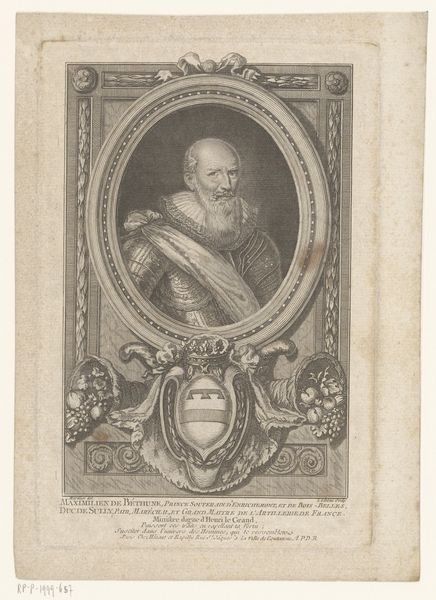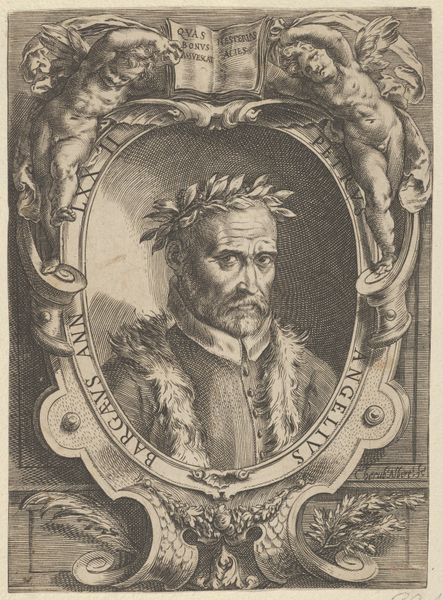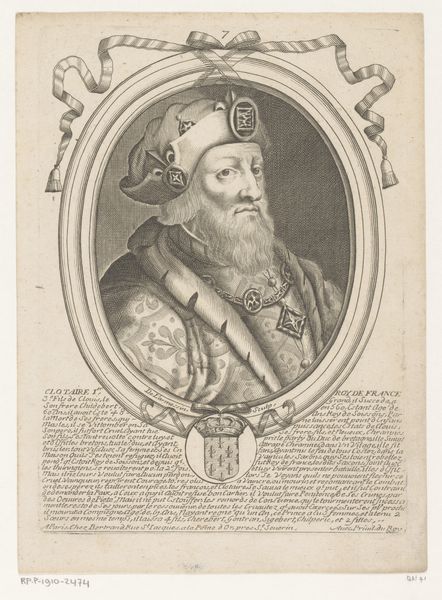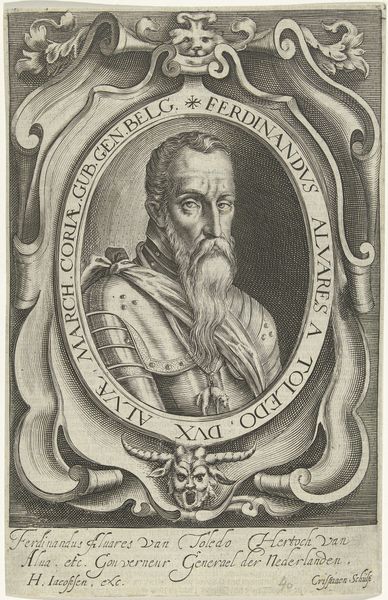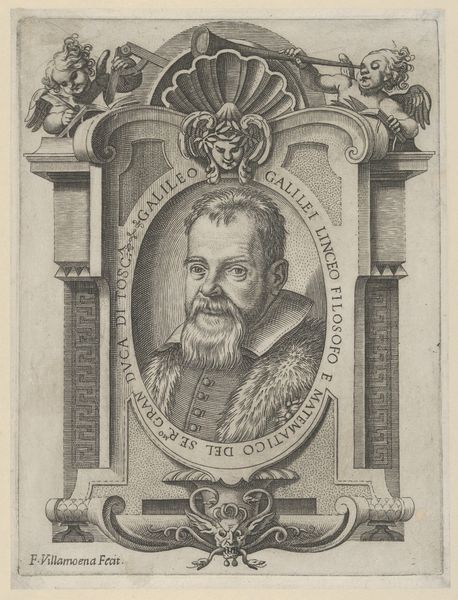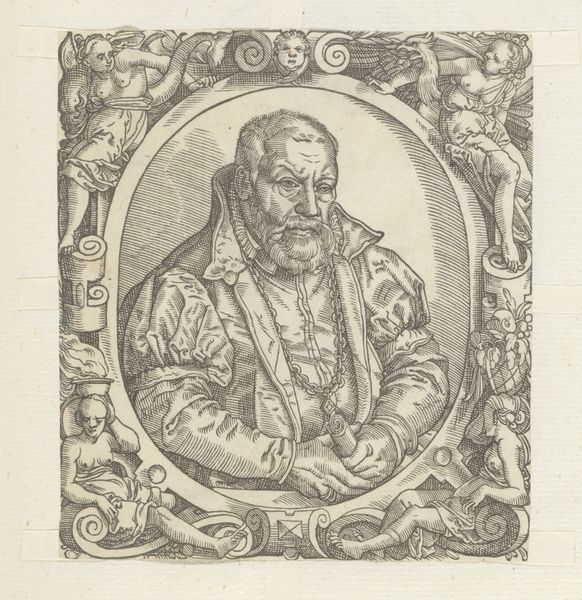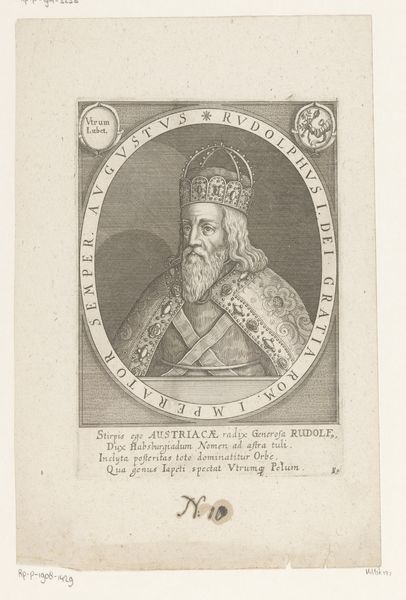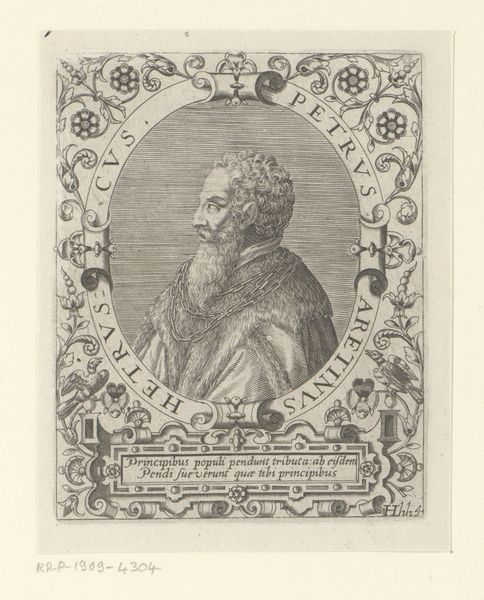
print, engraving
#
portrait
#
baroque
# print
#
portrait reference
#
geometric
#
line
#
portrait drawing
#
engraving
Dimensions: plate: 17.5 x 12.6 cm (6 7/8 x 4 15/16 in.) sheet: 18.3 x 13.5 cm (7 3/16 x 5 5/16 in.)
Copyright: National Gallery of Art: CC0 1.0
Curator: There's a somber yet regal quality that washes over you when you first see this print. Karel van Sichem's "Franciscus de Mendoza," likely from 1626, captures the gravitas of its subject. Editor: It’s definitely commanding, isn’t it? The textures, the way light and shadow define Mendoza’s armor, point to the labor and the skill of Sichem and the printmaking process, wouldn't you say? Curator: Absolutely. This Baroque engraving isn't just about aesthetic representation. Look at the details etched into the metal plate and transferred onto the paper. It speaks of craft, and more than that, the social status linked to disseminating these kinds of images. Editor: It's strange, but seeing all the text surrounding Mendoza almost frames him. It emphasizes that we, the viewers, are seeing him from a specific point of view. Curator: Indeed. The text itself—his titles, Latin verses—situates Mendoza within a complex political and military landscape. This work isn't just a portrait, it is a careful piece of propaganda. A carefully designed portrait of a high ranking Spanish General. The dissemination of such images influenced political opinion and consumption habits among the aristocratic elites. Editor: The portrait is powerful but also unsettlingly flat. The heavy use of lines to create dimension almost feels… constricting. It reflects, perhaps, the confines of Mendoza's societal role, while the precision required to make an engraving speaks to similar constraints, agreed? Curator: Perhaps. Think of the role the artist's hand has in relation to mass production. It also gives a greater awareness to a certain public. Without their purchases, images such as Mendoza would lack any status or significance. Editor: It makes me wonder what Mendoza himself would make of all this dissection. He is forever memorialized, but by what means, and to what end? Curator: An interesting question to ask. Van Sichem's rendering captures an idea rather than reality. What do we see, beyond the uniform, beyond his position of power? Perhaps simply a man, vulnerable to the very social forces that granted him influence in the first place.
Comments
No comments
Be the first to comment and join the conversation on the ultimate creative platform.
